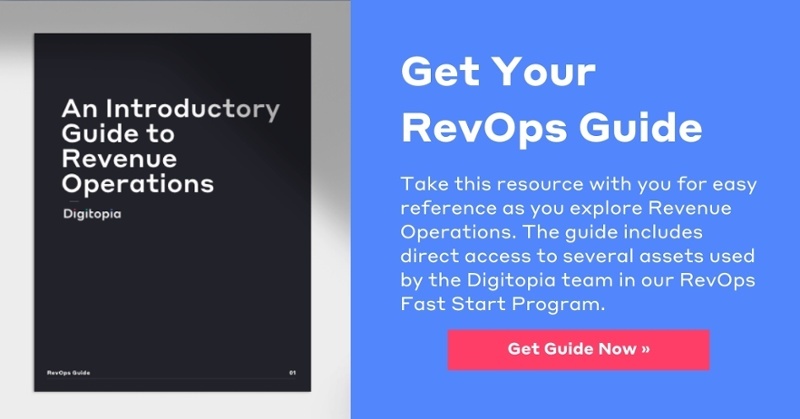How RevOps Impacts Your Tech Stack
by DJ Shirley | Updated Nov 4, 2021
Are you interested or beginning to take the first steps towards activating RevOps in your organization but unsure what tech you need to move forward? When it comes to RevOps (a.k.a. revenue operations) and technology, most organizations already have the required software in their tech stack to support the process.
There are five categories that every B2B organization needs to have to engage and serve their customers properly.
- Service Software
- Sales Software
- Marketing Software
- Middleware
- Reporting/Dashboarding Software
You need a collection of technology that addresses each category listed above, so you can report on the entire customer journey and gain key performance insights.
In this article, you will find an overview of each technology category, its general function, a breakdown of the lifecycle stages affiliated with the technology, and names of common software providers in each category for reference.
The 5 Technology Categories
Service Software
Lifecycle Stages: Fan, Customer
Examples of Service Software: Zendesk, Podium, HubSpot (Service Hub), Basecamp, etc.
Function: The function of your service software is to facilitate the day-to-day operations of your existing customers. Depending on your industry, you may utilize a hyper-specific platform built for your industry or a more general CRM or Management tool. Overall, key elements you want your service software to provide you include:
-
- Support or ticketing systems
- A Knowledge Base to address common questions and hurdles
- Customer surveys
- NPS
Sales Software
Lifecycle Stages: Opportunity, Qualified
Examples of Sales Software: Salesforce, HubSpot (Sales Hub), Zoho CRM, ActiveCampaign, etc.
Function: Your sales software's core function should focus on managing your organization's deal flow or sales pipeline. Advanced features your sales software can provide your team include the ability to add specific prospects to sales sequences, schedule meetings, report on pipeline metrics, and lifecycle stage movement.
Marketing Software
Lifecycle Stages: Leads, Visitors, Strangers
Examples of Marketing Software: MailChimp, HubSpot (Marketing Hub), ActiveCampaign, etc.
Function: Your marketing software should support two key areas. Firstly, your marketing software should serve as your management hub for your marketing efforts. Secondly, it should facilitate the maturation of contacts who have engaged with your website or specific social channels. Advanced features of marketing software can include:
-
- Marketing automation
- Contact segmentation
- Behavior tracking and analytics
- Content management and publishing capabilities
Middleware
Lifecycle Stages: All (Entire Customer Journey)
Examples of Service Software: Domo, Zapier, Bedrock Data, IFTTT, Microsoft Flow, etc.
Function: Middleware connects multiple tools that do not have an established integration, so you can merge the data from various sources to create a complete story of your business's performance in a single platform.
Reporting / Dashboard Software
Lifecycle Stages: All (Entire Customer Journey)
Examples of Reporting Software: Tablo, Klipfolio, Databox, Zoho Analytics
Function: Your reporting software needs to report on all the data from the marketing, sales, and service software to create a showcase of the business's overall performance.
Remember, a function of RevOps is to align and streamline the tech in your company that impacts the customer experience. To help support this approach, we encourage the mindset of...
...one technology in, one technology out.
In short, you should continually work to keep the number of software applications and tools within your tech stack as simplified as possible to avoid an over architected system that is overwhelming for your team. If every individual in your organization needs to be capable of working in 10+ software applications, efficiency is going to plummet.
How Tech Applications Support Customer Experience
The underlying goal to organize your technology in a structure that best supports the customer journey has the added benefit of unlocking more of your organization's revenue potential.
Creating a centralized entity to oversee and maintain the data associated with your customer experience has started to be recognized as Revenue Operations (aka RevOps). When first activating a RevOps Strategy is to conduct an audit of your technology and analyze how your technology is being used so you can provide clarity across your departments. Through this process, you can identify any gaps between the various lifecycle stages in your customer journey.
If you don’t want to wait and would like to talk with a RevOps specialist now, you can schedule a no obligations strategy session here.









